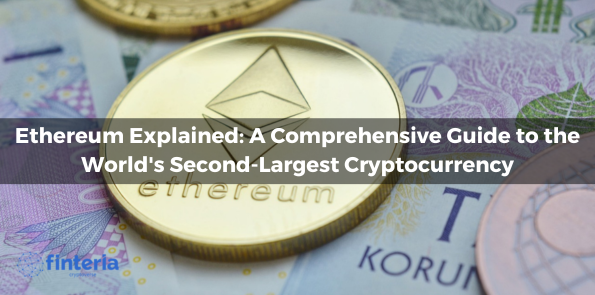Ethereum Explained: A Comprehensive Guide to the World's Second-Largest Cryptocurrency

Market Research
Introduction
In the realm of blockchain technology, Ethereum has emerged as a groundbreaking platform that goes far beyond being just a digital currency. Launched in 2015 by Vitalik Buterin, Ethereum has transformed the way we envision decentralized applications (dApps) and smart contracts. In this article, we will delve into the intricacies of Ethereum, covering its key concepts, features, and potential applications.
What is Ethereum?
At its core, Ethereum is an open-source, decentralized blockchain platform that enables developers to build and deploy smart contracts and dApps. While Bitcoin paved the way for peer-to-peer transactions, Ethereum takes a step further by offering a Turing-complete programming language, allowing developers to create complex applications on its platform.
Ether (ETH) - The Native Cryptocurrency
Ether, often referred to as ETH, is the native cryptocurrency of the Ethereum network. It serves as both a medium of exchange and a store of value within the ecosystem. Just like Bitcoin, Ether can be bought, sold, and traded on various cryptocurrency exchanges. However, Ethereum's primary focus is not solely on being a digital currency but rather on enabling developers to build decentralized applications and execute smart contracts.
Smart Contracts
Smart contracts are self-executing agreements written in code that automatically execute predefined actions when specific conditions are met. They operate on the principle of "if-then" logic, eliminating the need for intermediaries and offering a transparent and tamper-resistant way to facilitate agreements and transactions.
Ethereum's smart contracts are stored on the blockchain and can be accessed, verified, and executed by anyone connected to the network. This feature enables developers to create a wide range of applications, including decentralized finance (DeFi), supply chain management, voting systems, and more.
Decentralized Applications (dApps)
Decentralized applications, or dApps, are applications built on the Ethereum blockchain that leverage smart contracts to enable secure and transparent functionality. Unlike traditional applications that rely on centralized servers, dApps operate on a peer-to-peer network, ensuring decentralization, censorship resistance, and immutability.
The Ethereum Virtual Machine (EVM)
The Ethereum Virtual Machine (EVM) is the runtime environment in which smart contracts are executed. It is a Turing-complete virtual machine that allows developers to deploy and run their code on the Ethereum network. The EVM ensures that smart contracts are executed uniformly across all nodes in the network, guaranteeing consensus and preventing malicious actors from tampering with the system.
Gas and Transaction Fees
In the Ethereum network, gas is the unit used to measure the computational effort required to execute a transaction or contract. Every operation performed on the blockchain, such as storage, computation, and bandwidth usage, consumes a certain amount of gas. Gas fees, denoted in Ether, serve as a mechanism to allocate computational resources and prevent spam or malicious activity on the network.
Scaling and Ethereum 2.0
One of the main challenges Ethereum has faced is scalability. As the network gained popularity, congestion and high transaction fees became more prevalent. To address this, Ethereum has been undergoing a major upgrade known as Ethereum 2.0 or ETH2.
Ethereum 2.0 aims to shift from a Proof-of-Work (PoW) consensus mechanism to a Proof-of-Stake (PoS) mechanism, enhancing scalability, energy efficiency, and security. The upgrade introduces shard chains, which will enable parallel processing of transactions and smart contracts, significantly increasing the network's capacity.
Conclusion
Ethereum has revolutionized the blockchain landscape by providing a versatile platform for decentralized applications and smart contracts. Its focus on programmability, combined with a vibrant developer community, has led to the emergence of a wide range of innovative applications and use cases.
With ongoing upgrades and the transition to Ethereum 2.0, the network is poised to address scalability concerns and enhance its capabilities even further. As Ethereum continues to evolve, it remains a key player in the world of blockchain technology, shaping the future of finance, governance, and various industries worldwide.



